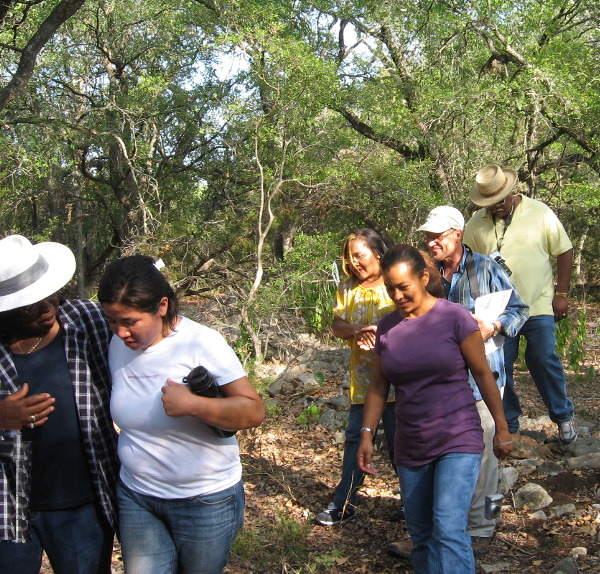From 2009 to 2011, Franklin and Lee conducted interviews with 27 people whose family ties were in the African American communities at Antioch Colony and the Prairie (the general area surrounding Buda), Manchaca, and East Austin. The informants ranged in age from 49 to 93 years old, and over 46 hours of interviews were audiotaped. A number of the interviewees visited the farmstead site, witnessing firsthand the tangible remains of the Williams family’s labors, and adding rich insights to what the archeologists uncovered.
As Franklin notes in the video clip above, it was a prime opportunity to involve the community in the investigation of a historic site. Many people in Texas do not know the value of historic archeology, much less that of African American archeological sites and what can be learned from them. The interviewees were enthusiastic participants in the research, adding numerous insights that enriched our understanding of the farmstead site.
Correlating Oral History to Archeology
By investigating the site in tandem with the oral history project, a number of connections could be drawn from the archeological finds to the recollections of the interviewees. Many of the oral history narrators told stories of living and working on farms in southern Travis or northern Hays County in the first half of the twentieth century. It is no coincidence that their recollections mirror the farm life that would have been experienced by the children of Ransom and Sarah Williams as they grew up in the late nineteenth century.
Even though new technologies and modern conveniences were becoming more widely available in the 1920s and 1930s, many people who were interviewed recalled traveling in wagons and on horseback, buying water in wooden barrels hauled from nearby creeks or springs, and reading by candle and lantern light. They washed clothes with tubs and washboards, butchered hogs and smoked their own meats, and did any number of farm chores that are now radically changed or have disappeared completely.
While the interviews are valuable on their own, they also played a central role in the interpretations of the archeological evidence recovered from the Williams farmstead. The table at right lists some of the correlations between the activities mentioned by oral history narrators and the archeological evidence found on the Williams farmstead.
 |
 |